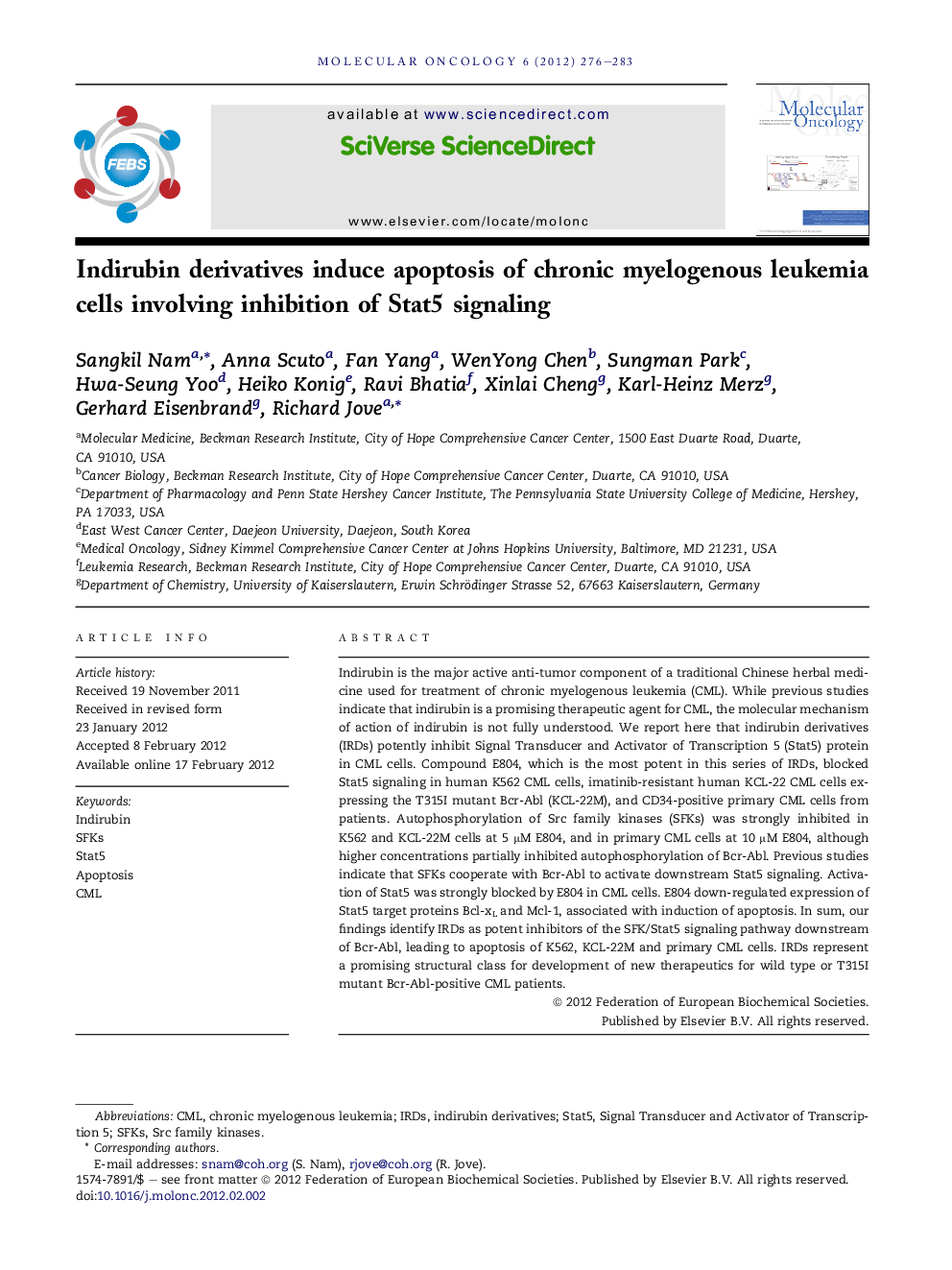| Article ID | Journal | Published Year | Pages | File Type |
|---|---|---|---|---|
| 2145792 | Molecular Oncology | 2012 | 8 Pages |
Indirubin is the major active anti-tumor component of a traditional Chinese herbal medicine used for treatment of chronic myelogenous leukemia (CML). While previous studies indicate that indirubin is a promising therapeutic agent for CML, the molecular mechanism of action of indirubin is not fully understood. We report here that indirubin derivatives (IRDs) potently inhibit Signal Transducer and Activator of Transcription 5 (Stat5) protein in CML cells. Compound E804, which is the most potent in this series of IRDs, blocked Stat5 signaling in human K562 CML cells, imatinib-resistant human KCL-22 CML cells expressing the T315I mutant Bcr-Abl (KCL-22M), and CD34-positive primary CML cells from patients. Autophosphorylation of Src family kinases (SFKs) was strongly inhibited in K562 and KCL-22M cells at 5 μM E804, and in primary CML cells at 10 μM E804, although higher concentrations partially inhibited autophosphorylation of Bcr-Abl. Previous studies indicate that SFKs cooperate with Bcr-Abl to activate downstream Stat5 signaling. Activation of Stat5 was strongly blocked by E804 in CML cells. E804 down-regulated expression of Stat5 target proteins Bcl-xL and Mcl-1, associated with induction of apoptosis. In sum, our findings identify IRDs as potent inhibitors of the SFK/Stat5 signaling pathway downstream of Bcr-Abl, leading to apoptosis of K562, KCL-22M and primary CML cells. IRDs represent a promising structural class for development of new therapeutics for wild type or T315I mutant Bcr-Abl-positive CML patients.
► We demonstrate that indirubin derivatives (IRDs) block Stat5 signaling in CML cells. ► Inhibition of activated Stat5 signaling is associated with induction of apoptosis. ► These findings suggest important pharmacological mechanism of action of indirubin. ► IRDs have potential as novel chemotherapeutic agents for treatment of CML patients.
